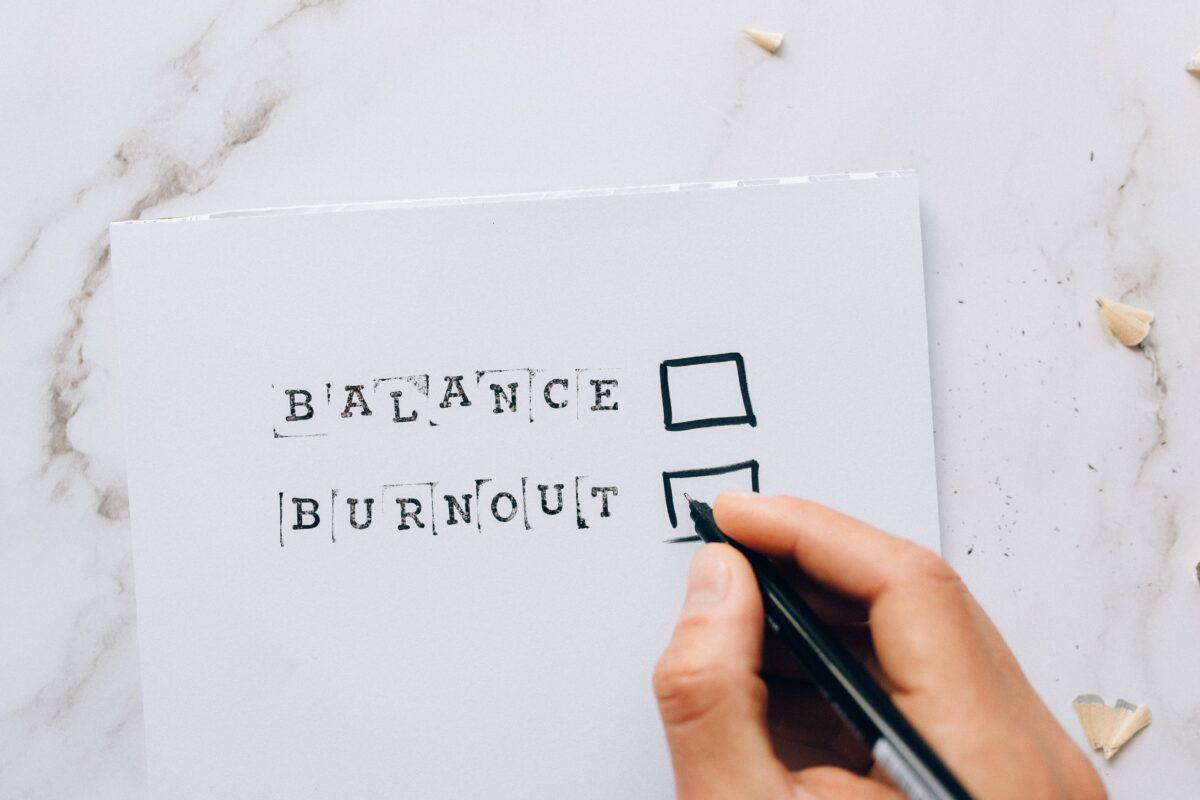
Burnout Recovery: How to Recharge and Rebuild While Under Stress
It’s hard, if not impossible, to go through life without experiencing stress, and it’s especially difficult to find the time to slow down and recharge when life gets hectic and burnout sets in. Burnout is a state of emotional, mental, and physical exhaustion caused by excessive and prolonged stress, which can leave us feeling powerless and helpless. But when we find ourselves in this state, it’s important to remember that we do have the power to take control and push through. With the right tools and resources, we can recharge and rebuild while under stress, so we can come out stronger and more refreshed than ever. In this blog post, I’ll share tips on how to recognize the symptoms of burnout and how to recover in order to build a life that’s more balanced and invigorating.
Quick Definition
To recover from burnout while under stress, it is important to recognize the warning signs and take breaks when needed. Developing regular self-care routines can help you to manage your stress and stay energized.
Recognizing Burnout
Recognizing burnout is the first step to recovery. Early detection can help prevent burnout from worsening and enable individuals to manage the condition before it becomes severe. It can be difficult to know when exactly one experiences burnout due to its elusive nature, but there are some key indicators that may suggest that an individual is beginning to feel overwhelmed by work.
A critical aspect of recognizing and diagnosing burnout is understanding what situations or life circumstances contribute to stress, as opposed to feeling overworked. Those who are feeling compelled to perform tasks at a higher level than what they are capable of, either because of demands imposed upon them or on a participating level, may be able to recognize signs earlier on.
Burnout can manifest itself in various ways emotionally, mentally, and physically. Physically, it may present symptoms such as headaches, fatigue, stomach problems, and concentration issues. Emotionally and mentally, signs might include difficulty sleeping or affecting moods, increased irritability or sadness, loss of interest in activities or hobbies once enjoyed, recurring negative thoughts or rumination, difficulty maintaining relationships and communication with others, or an overall sense of being stuck in a rut.
Another way one may notice signs of burnout is by determining how their habits have changed. An individual may find that their focus has shifted away from their usual objectives for personal growth and success toward focused task completion rather than meaningful goals. Patterns of avoidance or procrastination-like behaviors might develop if an individual feels unable to tackle tasks without panic or exhaustion setting in.
Recognizing burnout early is essential for prevention from further damage happening. Many people fail to recognize their feelings as those of burnout and instead normalize them as something more mundane that can be overcome with a change of attitude. However, understanding what the underlying cause for these feelings are is important when making decisions about how best to manage stress levels and bring balance back into daily life. With this understanding in mind, it’s time now to turn our attention towards identifying the signs of burnout in order take actionable steps towards recovery.
Signs of Burnout
Burnout is a unique state which doesn’t have the same effects on every individual. However, it is important to recognize the signs of burnout so that you can take steps to protect yourself from becoming overwhelmed by stress. The following are some of the most common signs of burnout:
Physical Exhaustion: Mental and physical exhaustion often go hand-in-hand with burnout. If you’re feeling unusually tired or fatigued, it could be an indicator of burnout.
Lack of Motivation: It can be challenging to remain motivated when facing long-term stress and pressure. A lack of motivation may show itself in complete indifference to tasks and goals, or it may manifest as a temporary decrease in productivity.
Emotional Withdrawal: Emotional withdrawal is another sign of burnout. This might look like avoiding contact with family and friends, shutting down emotionally when under stress, or struggling to talk about feelings and experiences that normally wouldn’t be considered difficult conversations.
Depression: Burnout can lead to depression if not addressed in a timely manner. Warning signs for depression include consistently low moods, difficulty sleeping, drastic changes in diet or exercise habits, lack of self-care, or generally feeling overwhelmed or out of control.
It is important to recognize these signs before they become severe in order to effectively recover from burnout and reclaim one’s sense of well-being. While everyone experiences differing levels of stress and responds differently to it, seeking help as soon as possible can provide additional support for a successful recovery journey.
Now that we’ve discussed the symptoms of burnout and how to recognize them, let’s move on to discuss more proactive strategies for preventing burnout before it happens including healthy lifestyle choices and mindfulness practices.
- A 2017 study found that people who used positive coping strategies, such as mindfulness and relaxation techniques, experienced better mental health outcomes compared to those who used negative coping strategies.
- Research has shown that when stress levels are high, the efficacy of cognitive behavioural therapy is increased for addressing burnout symptoms.
- A 2020 systematic review and meta-analysis found that the most effective interventions for burnout recovery are multicomponent interventions, which include elements like physical exercise, relaxation techniques, and psychotherapy.
Preventing Burnout
It is important to understand the difference between being busy and having burnout. Because burnout can have long-term health implications, preventing it is a crucial step for anyone living with stress.
The most effective way to prevent burnout is to prioritize self-care. This includes not only regular physical activity and healthy eating habits, but also activities that can provide relaxation and meaning, such as listening to music, spending time outdoors, or exploring places you’ve never been before. Additionally, take breaks throughout the day – even 5 minutes of meditation or breathing exercises can make a big difference.
Furthermore, maintaining open communication with family and friends is essential in times of stress. A healthy social life can help alleviate the effects of burnout, while keeping your mind active and supported by people around you who understand your situation.
Finally, it is essential to create healthy boundaries between work life and home/family life. Establishing a specific amount of time for work each day with clear guidelines helps prioritize other aspects of life that reduce the risk of burnout and promote overall wellbeing.
Resisting the urge to overextend yourself is key-being able to say “no” allows for proper boundaries between work and personal life.
Burnout prevention is possible if we recognize our own limits and acknowledge how our work might be affecting us mentally or physically during stressful times. Taking these steps can help us reach a balance in order to cope with stress and maximize productivity. Thus, it is important take proactive steps towards preventing burnout before it has a chance to take hold of someone’s life.
With this preventive understanding of burnout in mind, it is now time to move on to discussing Burnout Recovery While Under Stress – the path towards rebuilding one’s mental state while facing moments of prolonged distress.
Burnout Recovery While Under Stress
Burnout recovery while under stress can be a challenging process. For some, it’s hard to focus on self-care when they feel overwhelmed and drained. For others, the pressures of working and managing expectations (their own or those of their manager) can cause further stress, leaving them feeling unable to take the necessary steps to restore balance. To make matters worse, burnout itself is often a symptom of an underlying problem such as poor work/life balance or unmanaged relationships.
One side of the argument encourages that burnout recovery should be active and not passive. Proactive approaches such as setting achievable goals, establishing good boundaries for oneself and one’s job, and allocating time for self-care can help manage stress levels and prevent burnout from occurring in the first place. Mental health experts agree that engaging in activities that rejuvenate and relax both body and mind are essential for recovery. Additionally, building healthy relationships with colleagues and friends can provide positive reinforcement and support during times of stress.
On the other hand, there are also those who advocate for “just riding out” stressful situations instead of trying to actively manage them. This approach suggests that taking breaks and allowing yourself a window to recharge is sometimes all that’s needed to cope with stressful situations or symptoms of burnout. Even though these breaks may be temporary solutions and are ultimately less effective than actively managing stressors, this approach recognizes the importance of taking personal responsibility for one’s wellbeing by putting physical needs first and managing highly stressful situations more strategically.
Ultimately, the approach taken will depend on individual preference and circumstance, both of which should be closely monitored when dealing with periods of prolonged stress. Regardless of the chosen path for burnout recovery while under stress, prioritizing rest and self-care are vital components to achieving overall wellbeing. In the next section we discuss how best to prioritize rest and self-care while under stress as part of a burnout recovery plan.
Main Summary Points
Burnout recovery during times of stress can be a difficult process, but there are proactive and reactive approaches to managing it. Proactive approaches involve setting achievable goals, establishing good boundaries in both personal and work life, as well as allocating time for self-care. Reactive approaches suggest temporary breaks to allow oneself a window to recharge. Prioritizing rest and self-care regardless of the chosen approach, however, is key to achieving overall wellbeing and burnout recovery.
Prioritize Rest and Self-Care
Prioritizing rest and self-care is arguably the most important step for burnout recovery. Resting and taking time out of one’s regular routine can help to make a burned-out individual feel more energized, refreshed, and ready to take on tasks. Self-care activities can do wonders in terms of refreshing an individual’s body, mind and soul. Examples include getting enough sleep each night, engaging in physical exercise, eating nutritious foods, and spending time with loved ones. It is also important to make sure to set aside time for hobbies or activities that bring joy into one’s life.
At the same time, however, it is essential to not become too overwhelmed with taking breaks – as this might add unneeded stress of its own. Setting limits is key. It’s important for those attempting to recover from burnout to give themselves designated break periods but also set goals that will keep them motivated in reaching a healthier headspace from which they can more effectively take on the results of stress inducing tasks.
Now that we have established the importance of prioritizing rest and self-care as part of a successful burnout recovery plan, let us move on to exploring mental and emotional survival strategies that can help an individual restore their energy levels amidst a difficult life situation.
Mental and Emotional Survival Strategies for Burnout Recovery
Burnout recovery is a mentally, emotionally and physically challenging endeavor. When recovering from burnout, it is essential to build resilience to stressors and create an emotionally healthful environment. There are numerous mental and emotional survival strategies to focus on during burnout recovery, many of which center around self-care practices that foster reframing thought processes, reducing suffering, and improving wellbeing over time.
First, some argue that finding a sense of acceptance is a powerful tool in burnout recovery. Acceptance allows us to become mindful of our experiences, be comfortable with our imperfections, and think more positively about our current situation. Additionally, acceptance can lead to improved self-compassion, allowing us to work through difficult emotions without judgment, better managing stress and anxiety.
However, others suggest learning how to love and care for oneself as the most beneficial strategy during burnout recovery. Grounding oneself in activities and routines that bring joy help create healthy habits that promote a balanced lifestyle and eventually lead us towards healing from burnout exhaustion. Incorporating self-love strategies like dedicating “me time” each day, engaging in physical activity outdoors or creatively expressing oneself can make a huge difference in terms of having the motivation to keep going while rebuilding after burnout.
No matter the approach taken by an individual who is recovering from burnout, one thing is certain: supporting oneself mentally and emotionally requires consistent hard work. This can manifest in many ways – developing healthier coping skills, setting realistic expectations for yourself, practicing meditation or mindfulness as well as seeking professional help if needed. This is not only beneficial during the recovery process but keeps us prepared for future experiences of burnout vulnerability throughout our lives.
In order for one to recover from burnout successfully, it’s essential that one focuses on mental and emotional resilience building techniques – these strategies are vital to the well-being of an individual bouncing back from psychological exhaustion. Up next we will discuss physical relaxation techniques for burnout recovery that may aid in healing from burnout fatigue and weariness.
Physical Relaxation Techniques for Burnout Recovery
Physical relaxation techniques are one of the primary recommendations for burnout recovery. By engaging in physical activities like yoga, Tai Chi, walking, stretching and/or other forms of moderate exercise, we can calm our minds and recharge our batteries while under stress. In addition to calming our mental state, physical relaxation techniques can also help with de-stressing tight muscles and calming racing thoughts. Through physical release we can also reduce anxious energy and find equilibrium.
On one side of the argument, it is clear that engaging in physical activity will mimic the body’s natural process to relax. Furthermore, endorphins released through exercise promote positive moods and better sleep patterns — both essential components of successful burnout recovery. On the flip side of this argument, exercising too much or too intensely could result in a heightened level of stress on the body and possibly contribute to further feelings of burnout.
For best success in reducing burnout symptoms through physical relaxation techniques, it’s important to find balance between active exercise and passive stretching/yoga poses. It is also key to listen to your body – if any form of physical activity is causing pain or discomfort that doesn’t pass after a few minutes of engagement it’s time to pause and regroup before moving onto something else.
Now that we have discussed physical relaxation techniques for burnout recovery, let’s move on and talk about restorative activities for burnout recovery in the next section.
Restorative Activities for Burnout Recovery
Restorative activities are an essential part of burnout recovery and should not be overlooked. These restorative activities can range from physical activities in nature, such as walking outside or yoga, to participating in creative endeavors like painting or writing. While some may argue that these activities are too “soft” to combat the effects of burnout and stress, research has found that engaging in restorative activities can reduce psychological distress, improve cognitive functioning and help individuals gain back control over their lives.
For those looking for more active solutions to their burnout concerns, research shows that aerobic exercise is a successful form of relaxation for both short-term and long-term relief. Exercise helps to reduce cortisol (the stress hormone) levels, which helps individuals dealing with burnout to re-prioritize their internal resources while they renew themselves mentally and physically. As a bonus, exercise also releases endorphins which further contribute to reducing stress and may help with goal achievement in other areas of life.
However, not everyone reacts positively to exercise as a method of burnout relief — some people find it too physically strenuous or lack the motivation to stay consistent. For those individuals, forms of meditation or mindfulness practices may be more beneficial to undertake. Mindfulness has been proven by science to make significant improvements in reducing mental health issues due to its ability to regulate emotions and better connect individuals with their bodies. Not only will regular meditation provide them with energy and resilience during times of hardship, but it also can aid individuals with recovery from stress-related illnesses such as sleep disturbances, depression or anxiety.
No matter what activity an individual chooses for their restorative needs, consistency is key when it comes to developing skills for enduring stressful situations more effectively. After all, these activities are all about self-care; providing valued time for oneself so that the body and mind aren’t overloaded beyond the breaking point. Now that we’ve discussed how restorative activities can help during times of burnout, let’s move onto the last section which delves into our conclusion: Recovery from Burnout and Stress.
Conclusion: Recovery from Burnout and Stress
Burnout recovery is a tricky process that requires a consistent focus on self-care and stress management. Though many people feel overwhelmed and even helpless, the good news is that there are some practical steps we can take to restore our energy levels, cope with stress more effectively, and regain our sense of equilibrium.
Before attempting any type of burnout recovery plan, it’s important to assess your current state. Notice how your body feels, track any emotional or physical symptoms you experience regularly, and pay attention to any thoughts or beliefs that come up. Once you have an idea of what you need in order to recover from burnout, take action. Reach out for personal or professional support when needed, replace negative habits with positive ones, accept help from family and friends, slow down if necessary, set healthy boundaries for yourself and others, find joy in simple things, cultivate gratitude for what’s already present in your life, get plenty of restful sleep, nourish yourself with nutritious foods, establish routines that meet your needs, protect yourself from toxic environments, re-engage in activities you used to enjoy, stay connected to meaningful relationships—these are just a few actions that may prove useful in burnout recovery.
Ultimately, recovering from burnout isn’t an overnight process—it takes time and consistency. While it may feel challenging at first to take one step at a time toward reclaiming balance in your life, remember that making small changes now will add up over time and lead to greater well-being. Recognize any obstacles that arise but don’t let them stand in the way of healing; take each opposition as a signpost to push forward instead of falling backward into apathy or stagnation. With dedication and commitment toward self-care practices that work well for you personally, it’s possible not only to survive but also thrive in this journey to well-being following burnout.
Answers to Common Questions
How long does it typically take to recover from burnout?
Recovery from burnout typically takes different amounts of time for everyone. Studies have shown that it can take anywhere from a few weeks to several months to begin feeling like your old self again. It is important to set realistic goals that give yourself permission to take sufficient breaks and to be kind to yourself throughout the process. Recovery is made possible through gradual progress, engaging in activities that bring joy, and taking time away from work and stressful situations. Cultivating healthy habits such as regular exercise, proper nutrition, adequate sleep, and spending time with loved ones are all essential actions you can take towards restoring energy, making progress in healing and moving forward.
Are there any long-term effects of burnout that should be taken into consideration?
Yes, there can be long-term effects of burnout that should be taken into consideration. Burnout can cause a decrease in productivity and satisfaction at work, an increase in mental health issues, physical illness, and it can even lead to a complete loss of job satisfaction or even unemployment. Some common long-term effects of burnout include: increased stress, trouble concentrating or making decisions, feeling emotionally and mentally drained, feeling disconnected from work and family, insomnia, changes in appetite, low immunity to illnesses, irritability, chronic fatigue or exhaustion, and depression. It is important to note that if you are experiencing any of these symptoms for an extended period of time it is best to reach out for help from a healthcare professional. Additionally, it is important to take steps to prevent burnout in the future by building resilience to stress and taking care of yourself both physically and mentally.
What practical steps can I take to manage my stress when recovering from burnout?
When recovering from burnout, one of the best practical steps to manage stress is to incorporate deep breathing into your daily routine. Deep breathing activates the parasympathetic nervous system, which helps us to relax and calm down. It can be done anywhere and at any time, so it’s a great way to reduce stress on-the-go. Additionally, regular exercise has been found to be an effective way to combat stress, as it releases endorphins, which are hormones that help create feelings of happiness. Equally beneficial is practicing yoga and meditation, both of which can also help reduce stress levels by entering a state of mindfulness. This could include taking part in activities such as walking in nature, participating in hobbies, or contacting friends for social support. Finally, make sure to get enough sleep each night; studies have shown that inadequate sleep increases our stress levels significantly. Taking the time to properly rest and recover is an essential part of managing stress during burnout recovery.




